Customer Relationship Management with a CRM System

Building lasting relationships with customers requires more than just a salesperson’s intuition. Companies that manage contacts in an organized way better understand market needs, respond faster to signals from potential customers, and create a purchasing experience that translates into long-term customer loyalty. Increasingly, it is technology that becomes the ally in this process — especially CRM systems.
CRM (Customer Relationship Management) works like a sales command center. Instead of juggling multiple Excel files, scattered emails, and handwritten notes, companies can rely on one CRM system that centralizes all customer data. Every conversation, every sent proposal, and every stage of cooperation is stored in one database. As a result, both field sales reps and office managers can see the full picture of customer relationships and make better decisions based on reliable information.
How does customer relationship management evolve with a CRM system?
Imagine a salesperson searching for notes from a previous meeting — some written on paper, some buried in the inbox, and others remembered vaguely. It’s easy to overlook something important: customer preferences, previous objections, or a promised follow-up date. Such gaps often determine whether the client stays with the company for years or turns to the competition.
An implemented CRM software eliminates this chaos. It gathers all customer interactions in one place, allows teams to analyze the entire history of the customer relationship, and suggests next steps. From a manager’s perspective, it offers complete control over the sales process — from acquiring new customers to maintaining and growing cooperation. For sales teams, it simplifies everyday work by reducing the risk of forgetting important details.
In this sense, relationship management is not about reacting to market needs spontaneously but about executing a well-defined CRM strategy. Modern CRM solutions support both customer service interactions and sales force automation, ensuring every business — regardless of size — gains higher predictability, improved customer satisfaction, and scalable business growth.
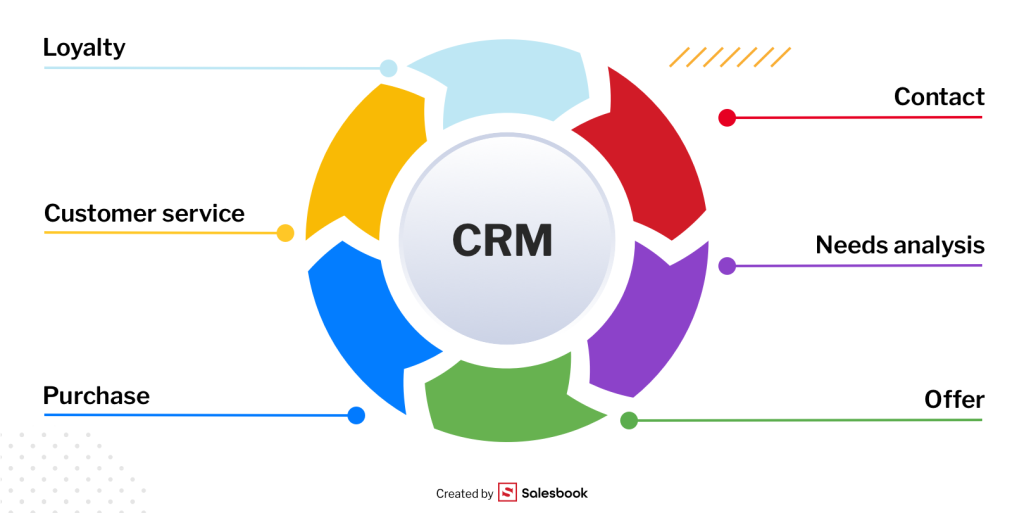
Customer Relationship Management with CRM – What Does It Mean in Practice?
When we talk about customer relationship management, we often imagine a salesperson who remembers everything — who they spoke to, when, and about what; what the customer’s needs are; and when the next meeting is planned. In reality, that’s impossible — especially when dozens or even hundreds of contacts are involved. That’s where CRM software comes in, organizing the entire process and turning improvisation into a consistent CRM strategy.
A properly implemented CRM platform becomes more than just a tool — it represents a complete approach to working with customers, where every interaction, every proposal, and every meeting is recorded and analyzed. This enables sales teams not only to respond to ongoing inquiries but also to plan long-term activities focused on building strong and lasting customer relationships.
CRM System Features That Transform Daily Work
Modern CRM systems act like an assistant that never forgets a detail. In practice, this means that every sales rep and sales manager gains a single solution supporting all aspects of managing customer relationships.
Key features that make a difference include:
- Data centralization – all customer information is stored in one place: meeting history, emails, documents, and call notes.
- Business process management – salespeople can see what stage each lead is in, while managers can easily analyze the sales pipeline.
- Sales force automation and workflow automation – follow-up reminders, automatic offer generation, and integrations with other tools save time and reduce errors.
- Customer service and technical support – quick access to past customer interactions and service tickets allows teams to provide responses that truly solve problems.
- Reporting and data analysis – decisions can be based on accurate CRM data, not just intuition.
These CRM features make relationship management no longer an organizational challenge but a structured process based on reliable insights and smoother collaboration between sales and marketing teams.
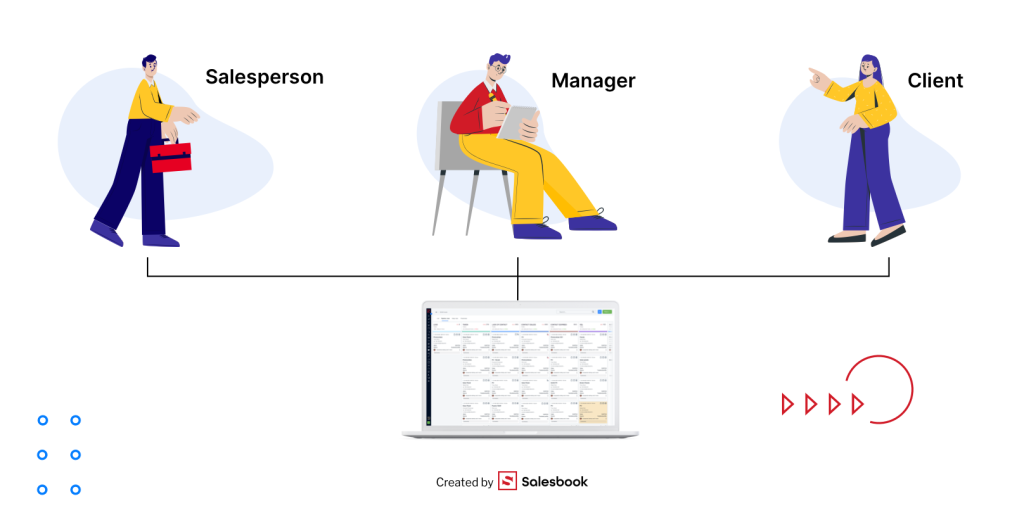
Different Types of CRM Solutions – From Simple Tools to Advanced Platforms
Not every company needs an enterprise-grade CRM platform right away. The right choice depends on business scale, industry specifics, and the unique needs of each sales team. The market offers various types of CRM solutions, differing in scope, features, and level of complexity.
- Simple online CRMs – perfect for small businesses that want to organize their customer communication and have quick access to customer data in the cloud. They provide basic CRM tools for relationship management, such as contact databases, task reminders, and simple lead management options.
- Mid-level online CRM systems – offer more functionality: reporting, email integration, sales force automation, and sales pipeline management. These systems suit growing companies that need greater predictability and better control over the sales process.
- Advanced CRM platforms – comprehensive ecosystems that combine sales, marketing, customer service, and analytics. Such cloud-based CRM environments support the entire customer lifecycle, from acquiring new customers to maintaining customer retention and long-term loyalty.
Regardless of scale, implementing CRM software should be strategic and aligned with real business objectives. A small business can start with a lightweight cloud CRM solution and upgrade to a more advanced customer relationship management system as it grows. The key is to choose the right CRM — one that empowers both sales and marketing teams, enhances customer engagement, and ultimately improves customer satisfaction.
Curious to see how the Salesbook CRM system works in practice? Book a free demo with one of our experts and discover how it can transform your customer relationship management CRM strategy.
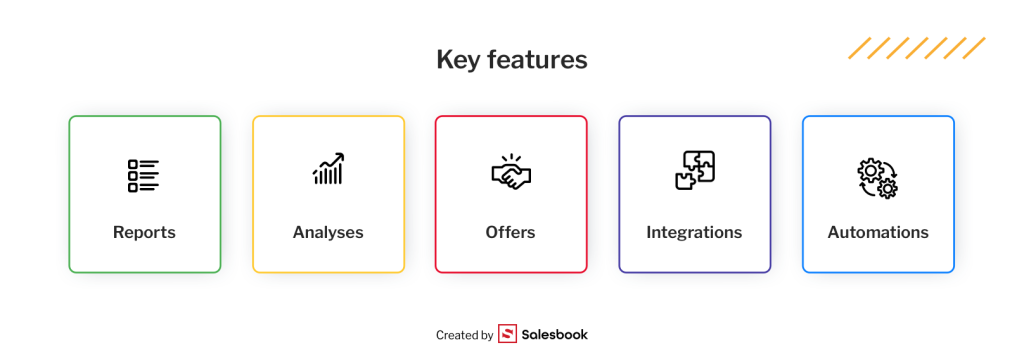
Online CRM vs. Traditional System – Which One to Choose?
The decision to use a cloud-based CRM or a traditional on-premise system often determines how efficiently a sales team works and how effectively a company can manage a growing customer base. The right choice depends on budget, scale of operations, and expectations regarding business processes.
Implementing a CRM system in the cloud opens up new possibilities: flexibility, mobility, easier integrations with other tools, and no need to invest in expensive servers. Traditional CRM systems still have their place — especially in organizations that require full control over infrastructure — but increasingly, they lose ground to cloud CRM solutions, particularly in environments where fast adaptation and easy access to customer data are key.
Flexibility and Mobility for Field Sales
Sales is not just about offices and reports — it’s about meetings, customer visits, and conversations on the go. Online CRM software allows you to have all essential customer information at your fingertips, whether you’re working on a laptop, tablet, or smartphone.
With this approach, there’s no need to return to the office to check collaboration history or prepare an offer. Everything is accessible in real time — from notes after the last meeting to the status of a deal. This greatly simplifies relationship management and increases responsiveness to changing customer expectations.
The flexibility of a cloud-based CRM platform also translates into effortless scalability. The company can add new users or modules at any time without costly upgrades or downtime. In practice, this means that organizational growth is no longer limited by technological constraints — an essential advantage for businesses focused on efficiency and business growth.
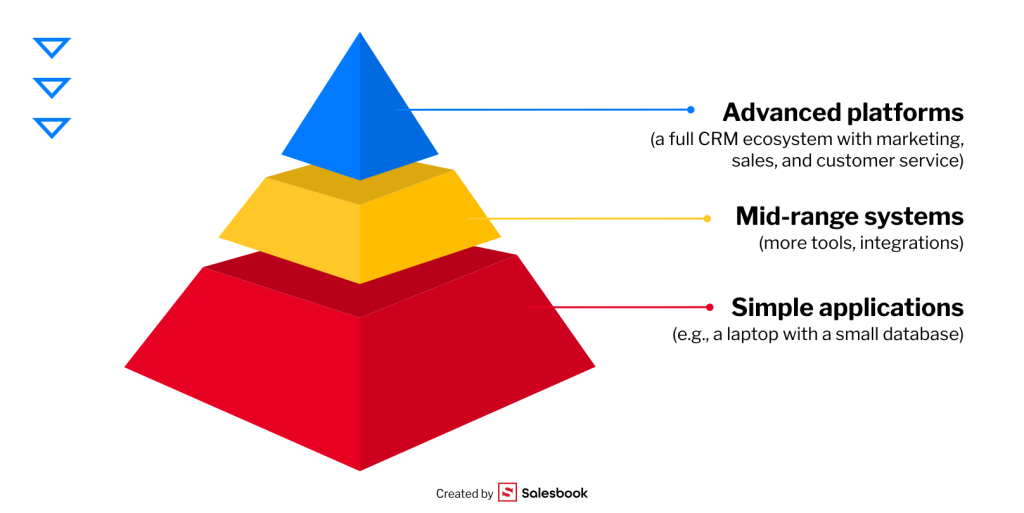
Data Security and Databases in Online CRM
One of the most common questions when choosing a CRM system concerns data security. In a traditional setup, all customer data is stored on company servers — which gives a sense of control but also comes with great responsibility. Regular backups, updates, and constant administration are required to keep everything running smoothly.
In the case of an online Customer Relationship Management (CRM) platform, the responsibility for data protection lies with the provider. Information is encrypted, regularly backed up, and stored in certified data centers. This significantly reduces the risk of data loss and provides a higher level of protection against cyberattacks than many locally installed systems.
At the same time, cloud-based CRM solutions support compliance with data protection regulations, which further increases customer trust. For organizations that want to maintain high-quality service and avoid technical complications, CRM systems in the cloud are a safer and more practical choice.
As a result, this approach not only simplifies daily operations but also allows teams to focus on what truly matters — building strong customer relationships, improving business processes, and strengthening competitive advantage.
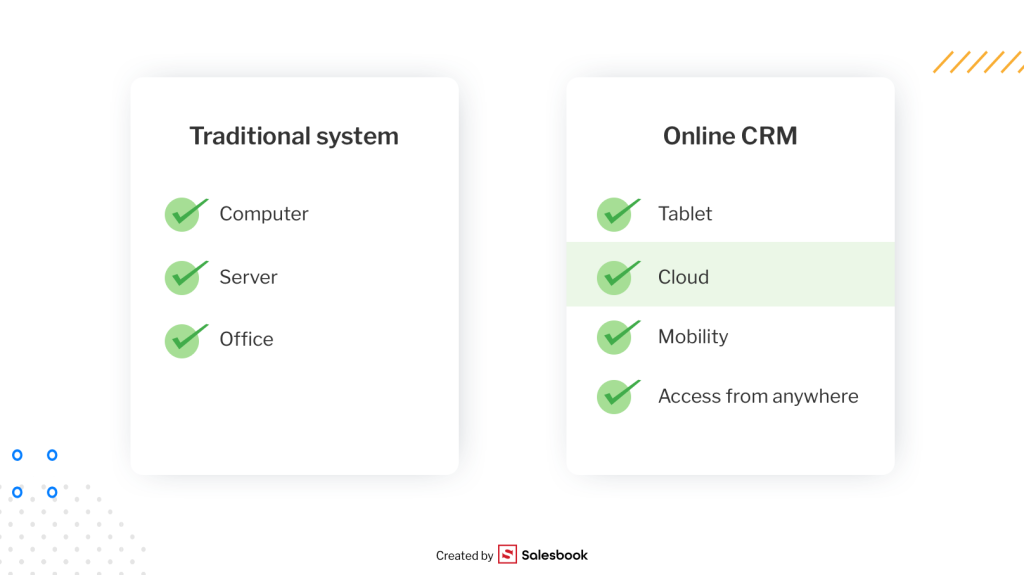
How to Build an Effective Customer Relationship Management Strategy
An effective customer relationship management (CRM) strategy doesn’t emerge overnight. It’s a process that requires understanding customer needs, selecting the right tools, and implementing them consistently. A CRM system plays a key role here — it allows businesses to collect customer data, analyze it, and turn insights into actionable steps. Most importantly, a well-configured CRM solution doesn’t impose rigid workflows; it supports both sales teams and managers who need to view customer relationships from a broader perspective.
Segmentation and Personalization of Communication
Every customer is different — each has their own priorities, decision-making pace, and budget. Trying to communicate with everyone in the same way is a shortcut to losing their interest. That’s why segmentation is the first step in building an effective CRM strategy.
A CRM platform enables customer segmentation by creating specific audience groups based on various factors such as company size, industry, collaboration history, or purchase behavior. With these insights, salespeople don’t interact with an anonymous database — they communicate with real, defined individuals whose customer preferences and patterns are already partially known.
Personalization makes every interaction more natural and helps sales reps manage customer relationships thoughtfully and efficiently. It also boosts customer satisfaction, as buyers receive offers that reflect their situation and expectations — not generic proposals they could get from anyone.

Data Analysis and the Use of AI in CRM
Data is the fuel that powers sales — but numbers alone aren’t enough; they need to be interpreted. A CRM system collects comprehensive customer data — from the first contact to long-term cooperation. By analyzing this CRM data, companies can draw conclusions about performance, predict customer behavior, and plan future actions more effectively.
Artificial intelligence plays an increasingly important role in this process. Algorithms built into modern customer relationship management software identify which potential customers are most likely to buy and which ones require additional attention. This predictive analytics doesn’t replace salespeople — it strengthens their abilities, helping them focus on high-value opportunities and improve sales forecasting accuracy.
Automation and the Quality of Customer Service
Automation is often associated with reducing human interaction, but a well-implemented CRM solution does the opposite — it allows salespeople to spend more time talking to customers and less time on repetitive tasks.
For example, the system automatically sends follow-up reminders, generates offers based on existing customer data, and syncs seamlessly with calendars and other CRM tools. This sales force automation frees sales reps from administrative work, making the entire sales cycle faster and more precise.
As a result, customer relationship management becomes more thoughtful and structured. No information gets lost, managers see the full picture of customer interactions, and customer service teams can truly listen and understand the other side. The balance between CRM technology and a human-centered approach is what leads to stronger customer engagement, deeper customer relationships, and long-term cooperation that drives customer loyalty and business growth.

Databases as the Heart of a CRM System – How to Use Them Effectively
There is no effective customer relationship management (CRM) without a well-structured database. This is where all customer information is stored — from basic contact details to purchase history, preferences, and meeting notes. The database acts as a command center that enables not only managing customer relationships but also predicting future needs and behaviors.
A thoughtful CRM data structure allows you to easily create relevant audience segments — for example, active buyers, customers in negotiation, or those requiring additional support. This way, sales reps don’t waste time on random actions, and communication becomes more targeted and effective.
Modern CRM systems provide access to the unified customer data from any location and on any device — a feature especially valued by field sales teams. Before a meeting, a salesperson can quickly review collaboration history; a manager can analyze the sales pipeline; and the customer service department can find context for a ticket. All of this without flipping through spreadsheets or chasing colleagues for details.
When properly used, the customer database not only streamlines business processes but also builds customer trust and strengthens customer relationships. Every interaction becomes consistent and reflects the company’s professionalism — a key factor in maintaining customer satisfaction and long-term customer retention.
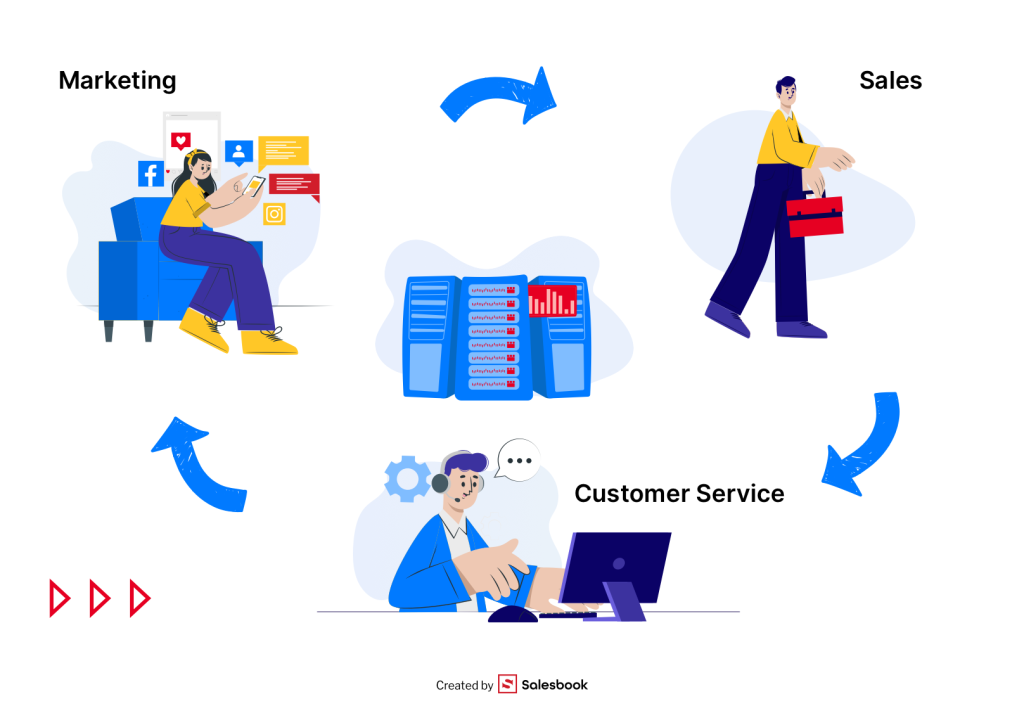
Summary – CRM System as a Strategic Growth Tool
A CRM system is no longer just an add-on to the daily work of salespeople — it has become the foundation of modern sales and marketing operations. It’s a strategic tool that combines data organization, analytics, automation, and reporting. That’s why more and more companies treat the implementation of CRM software not as a technical upgrade but as a long-term strategic investment.
In practice, this means greater control over customer relationships, better-organized business processes, and faster responses to changing market conditions. It also provides enhanced data security and one centralized source of customer information, accessible anytime and anywhere — whether in the office or working remotely.
The true advantage goes to companies that see CRM platforms not merely as data archives, but as systems that drive overall customer service relationships, strategy, and growth. Thoughtful customer relationship management is now the key to meeting rising customer expectations and staying competitive in dynamic markets.
To sum up, in a world where competition never sleeps, CRM systems are the tools that enable businesses not only to survive but to grow faster. Companies that adopt customer relationship management CRM win — not because they have more resources, but because they know how to strengthen customer relationships and fully leverage the value of every interaction.
Discover the power of the Salesbook CRM solution. Book a free live demo with our expert and learn how to manage your customer base effectively.
FAQ – Everything You Need to Know About CRM Systems
1. What is an operational CRM and how does it help improve sales productivity?
An operational CRM focuses on automating day-to-day tasks related to sales, marketing, and customer service. It supports sales productivity by simplifying data entry, automating follow-ups, and providing a clear view of each customer’s stage in the customer journey. For instance, sales leads can be automatically assigned to the right sales reps, ensuring no opportunities are missed and every client receives timely attention.
2. How does collaborative CRM enhance the customer experience and customer satisfaction?
A collaborative CRM connects all departments — from sales and marketing teams to customer service — allowing them to share and update customer data in real time. This cross-functional approach improves the overall customer experience, as every interaction is informed by previous contacts and preferences. Whether it’s a contact center agent’s job responding to an inquiry or a salesperson preparing a new proposal, everyone operates with access to the same information about the entire customer journey.
3. What are some real CRM examples used by business-to-business and business-to-consumer companies?
There are many CRM examples across industries. In business-to-business (B2B) organizations, CRMs are used to manage long sales cycles, coordinate multiple stakeholders, and track marketing campaigns. In business-to-consumer (B2C) contexts, CRMs help organize customer data, automate communication, and deliver personalized offers that improve customer experience and loyalty. Both models rely on features like automation, analytics, and integration with other tools to manage relationships effectively.
4. How can marketing departments use CRM solution to improve their efforts?
Marketing departments benefit greatly from CRM tools that allow them to analyze customer data, measure the performance of marketing campaigns, and optimize marketing efforts. Teams can track engagement levels, plan geographic marketing campaigns, and produce more personalized marketing materials based on insights gathered from current and potential customers. This alignment ensures consistent messaging across the entire customer journey and helps convert new customers into loyal advocates.
5. How does CRM help companies manage and streamline customer data and customer interactions?
CRMs make it easy to manage customer data efficiently and securely. Businesses can streamline customer data collection through integrations and automation, ensuring that every data entry point — from emails to phone calls — is logged automatically. This enables teams to organize customer data better and make informed decisions faster. Ultimately, an optimized customer relationship management process allows companies to improve their customer experience and strengthen relationships across all touchpoints.
6. Can CRM software support project management and cross-team collaboration?
Yes, many modern CRM solutions include project management and collaborative CRM features that allow multiple departments to work on shared goals. For example, when launching a new product or campaign, both sales and marketing can track deliverables, deadlines, and customer responses in one system. This integration ensures a seamless flow of information and creates a more consistent customer experience across all channels and stages of the customer journey.
Table of Contents







